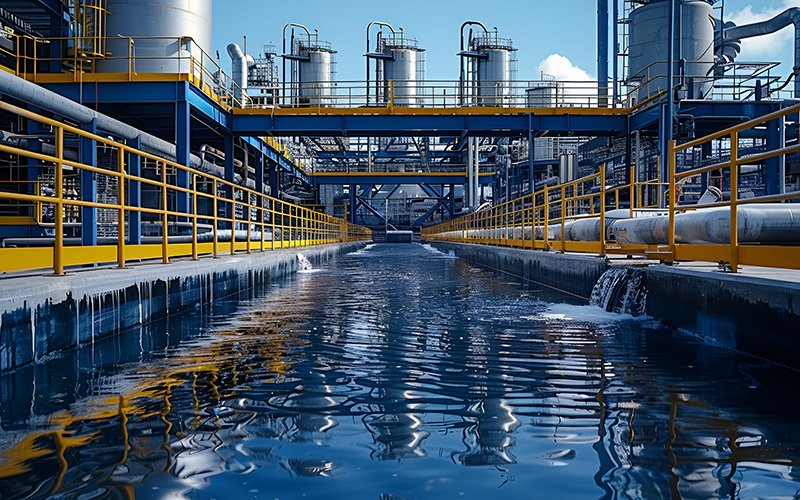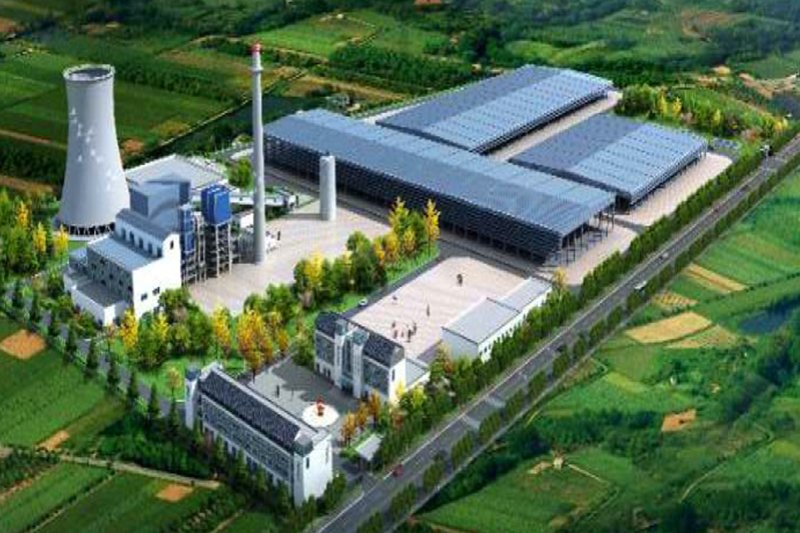The piping for hot water boiler systems is crucial and must meet strict technical requirements. This paper compares and analyzes the mechanical properties, chemical composition, deviation control, and non-destructive testing of Q235B (SY/T 5037—2018), Q235B (GB/T 3091—2015), and L210 (GB/T 9711—2017) for a C-class hot water boiler piping system. The results provide valuable references for boiler operations and similar applications.

Hot water boilers are widely used in industrial production and the service industry, such as hotels. A key project has selected Q235B welded pipes from “Submerged Arc Welded Steel Pipes for Ordinary Fluid Transportation” (SY/T 5037—2018) for the boiler’s outlet and return pipes. The main technical parameters of the hot water boiler and piping are shown in Table 1. The material selection for hot water boiler piping is clearly specified in Appendix A of the “Boiler Safety Technical Regulations” (TSG 11—2020) (Table 2). Although SY/T 5037—2018 is not included in TSG 11 Appendix A, a technical analysis is needed to determine if Q235B welded pipes from SY/T 5037—2018 can be used for the hot water boiler’s outlet and return pipes under specified conditions.
Table 1: Main Parameters of the Hot Water Boiler
| Boiler Model | Rated Heat Load | Inlet/Outlet Piping Material | Rated Inlet/Outlet Water Temperature | Max Allowable Working Pressure | Inlet/Outlet Pipe Specifications |
|---|---|---|---|---|---|
| UT-M42 | 6.9 MW | Q235B (SY/T 5037—2018) | 70℃ / 90℃ | 1.0 MPa | Φ273×7 Φ529×8 |
Table 2: Permissible Materials and Scope for Hot Water Boiler Piping (TSG 11—2020)
| Material Grade | Standard Number | Application Scope |
|---|---|---|
| Usage | ||
| Q235B | GB/T 3091 | Hot Water Piping |
| L210 | GB/T 9711 | Hot Water Piping |
boiler piping boiler piping boiler piping boiler piping boiler piping boiler piping boiler piping boiler piping boiler piping boiler piping boiler piping boiler piping
1. Standard Scope
SY/T 5037—2018 specifies the dimensions, shape, quality, performance requirements, test methods, inspection rules, coating, marking, and quality certificates for submerged arc welded steel pipes for ordinary fluid transportation. It applies to pipes used for transporting water, air, heating steam, and other similar fluids.
GB/T 3091—2015 specifies the dimensions, shape, types, technical requirements, test methods, inspection rules, packaging, standards, and quality certificates for welded steel pipes used for low-pressure fluid transportation, including straight seam and spiral seam submerged arc welded pipes.
GB/T 9711—2017 specifies the manufacturing requirements for seamless and welded steel pipes used in oil and gas pipeline transportation systems. It applies to the manufacturing, inspection, marking, recording, and loading of these pipes.
From the standard scope, both SY/T 5037—2018 and GB/T 3091—2015 are suitable for low-pressure fluid transportation, including hot water and heating steam. GB/T 9711—2017 is primarily for oil and gas pipelines but can also be used for hot water and heating steam pipes.
2. Raw Material Status
SY/T 5037—2018 uses Q235B steel from “Carbon Structural Steel” (GB/T 700—2007), produced using hot-rolled steel strips or plates. GB/T 3091—2015 also uses Q235B steel in hot-rolled, controlled-rolled, or normalized states, typically manufactured as straight seam or spiral seam welded pipes. GB/T 9711—2017 uses L210 steel, produced through rolling, normalizing, or normalizing forming, often using submerged arc welding.

3. Outer Diameter and Wall Thickness of Boiler Piping
SY/T 5037—2018 specifies steel pipes with an outer diameter not less than 219.1 mm and a nominal wall thickness of t ≥ 3.2 mm. GB/T 3091—2015 specifies pipes with a nominal outer diameter and wall thickness following “Dimensions and Unit Length Weight of Welded Steel Pipes” (GB/T 21835—2008). GB/T 9711—2017 specifies diameter and thickness deviations according to its standards.
The deviation requirements for welded steel pipes’ outer diameter and wall thickness are shown in Tables 3 and 4.
Table 3: Comparison of Outer Diameter Deviations
| Material Standard | Nominal Diameter | Applicable Range |
|---|---|---|
| Pipe Body | Pipe End | |
| SY/T 5037—2018 | 219.1 < D ≤ 610 | ±1.0%D |
| GB/T 3091—2015 | 273.1 < D ≤ 508 | ±0.75%D |
| GB/T 9711—2017 | 168.3 < D ≤ 610 | ±0.75%D, max deviation ±3.2 mm |
Table 4: Comparison of Wall Thickness Deviations
| Material Standard | Wall Thickness Range | Allowable Deviation |
|---|---|---|
| SY/T 5037—2018 | t ≤ 5 mm | ±0.5 mm |
| 5 mm < t ≤ 15.0 mm | ±10.0%t | |
| t > 15.0 mm | ±1.5 mm | |
| GB/T 3091—2015 | — | ±10.0%t |
| GB/T 9711—2017 | t ≤ 5 mm | ±0.5 mm |
| 5 mm < t < 15.0 mm | ±10.0%t | |
| t ≥ 15.0 mm | ±1.5 mm |
4. Mechanical Properties and Chemical Composition
SY/T 5037—2018 and GB/T 3091—2015 use Q235B steel from “Carbon Structural Steel” (GB/T 700—2007). Both standards specify similar tensile and yield strengths, but SY/T 5037—2018 requires a higher elongation after fracture compared to GB/T 3091—2015. Compared to L210 in GB/T 9711—2017, Q235B from SY/T 5037—2018 has superior mechanical properties. Both SY/T 5037—2018 and GB/T 3091—2015 have similar requirements for guided bend tests.
Chemical composition requirements for Q235B steel in SY/T 5037—2018 and GB/T 3091—2015 are identical, while L210 in GB/T 9711—2017 has stricter P and S content limits.
Table 5: Comparison of Mechanical Properties
| Material Grade | Minimum Yield Strength ReL/MPa | Minimum Tensile Strength Rm/MPa | Minimum Elongation A/% |
|---|---|---|---|
| t ≤ 16 mm | 16 mm < t ≤ 40 mm | D ≤ 168.3 mm | |
| Q235B (SY/T 5037—2018) | 235 | 225 | 370 |
| Q235B (GB/T 3091—2015) | 235 | 225 | 370 |
| L210 (GB/T 9711—2017) | 210 | 210 | 335 |
Table 6: Comparison of Chemical Composition
| Material Grade | Standard Number | Chemical Composition /% |
|---|---|---|
| C | ||
| Max | ||
| Q235B | SY/T 5037—2018 | 0.20 |
| Q235B | GB/T 3091—2015 | 0.20 |
| L210 | GB/T 9711—2017 | 0.22 |
5. Non-Destructive Testing and Hydrostatic Testing
SY/T 5037—2018 has higher requirements for hydrostatic testing compared to GB/T 3091—2015. It also requires ultrasonic or radiographic testing for weld seams, whereas GB/T 3091—2015 does not specify such requirements. GB/T 9711—2017 has the strictest non-destructive testing and hydrostatic testing requirements among the three standards.
Table 7: Comparison of Non-Destructive Testing and Hydrostatic Testing
| Material Grade | Standard Number | Non-Destructive Testing | Hydrostatic Testing |
|---|---|---|---|
| Q235B | SY/T 5037—2018 | ① Ultrasonic or X-ray testing for weld seams ② X-ray quality must meet GB/T 3323 requirements; ultrasonic quality must meet SY/T 6423.2 standards ③ First pipe’s weld seam must be fully inspected, and at least two pipes per ten must be sampled for non-destructive testing | ① Each pipe must undergo hydrostatic testing, pressure p=2S·t/D ② Pressure holding time: < 508 mm pipes ≥ 5 s; ≥ 508 mm pipes ≥ 10 s |
| Q235B | GB/T 3091—2015 | No non-destructive testing requirements | ① Each pipe must undergo hydrostatic testing, pressure p=2S·t/D ② Pressure holding time: ≥ 5 s |
| L210 | GB/T 9711—2017 | ① Full-length ultrasonic testing for SAW pipes (unless RT is agreed upon) ② Radiographic testing for pipe ends; ultrasonic testing for the first 25 mm of each pipe end as per ASTM A578, ASTM A435, or SY/T 6423.4—201 | ① Each pipe must undergo hydrostatic testing, pressure 7.1 MPa (for Φ273×7.8 pipes) ② Pressure holding time: ≥ 5 s |
Conclusion
After a comprehensive comparison and analysis, the following conclusions can be drawn:
- Applicability: SY/T 5037—2018, GB/T 3091—2015, and GB/T 9711—2017 standards are all applicable for heating steam and hot water transportation.
- Material Consistency: Both SY/T 5037—2018 and GB/T 3091—2015 use Q235B steel from GB/T 700 to manufacture welded pipes.
- Thickness Deviation Control: For pipes with wall thicknesses of 5.0 to 15.0 mm, SY/T 5037—2018 has the same thickness deviation control as GB/T 3091—2015 and GB/T 9711—2017. For pipes with diameters of Φ273 mm and Φ529 mm, SY/T 5037—2018 has less stringent outer diameter deviation control compared to GB/T 3091—2015 and GB/T 9711—2017.
- Mechanical Properties: SY/T 5037—2018 has superior tensile strength, yield strength, and elongation after fracture compared to GB/T 3091—2015 and GB/T 9711—2017. The requirements for guided bend tests are consistent between SY/T 5037—2018 and GB/T 3091—2015.
- Chemical Composition: The chemical composition of Q235B in SY/T 5037—2018 is consistent with GB/T 3091—2015, but the P and S content control is not as strict as in L210 from GB/T 9711—2017.
- Testing Requirements: SY/T 5037—2018 has higher requirements for hydrostatic and non-destructive testing compared to GB/T 3091—2015.
In summary, SY/T 5037—2018 and GB/T 3091—2015 are highly compatible, with similar quality standards, mechanical properties, and process performance for Q235B welded pipes. Therefore, from a technical perspective, Q235B welded pipes from SY/T 5037—2018 should be suitable for low-temperature hot water boiler systems. However, until SY/T 5037—2018 is referenced by TSG 11, it is not recommended to directly use these pipes for boiler systems. It is suggested that relevant authorities consider including Q235B welded pipes from SY/T 5037—2018 in Appendix A of TSG 11—2020 for use in low-parameter hot water boiler piping.
References
- Li Jing, Zhang Helin, Zhu Cai, et al. “Corrosion Characteristics and Prevention Measures of Hot Water Boilers.” Journal of Zhengzhou University of Light Industry (Natural Science Edition), 2003(4): 59-61.
- Petroleum Pipe Professional Standardization Technical Committee. “Submerged Arc Welded Steel Pipes for Ordinary Fluid Transportation: SY/T 5037—2018.” Beijing: Petroleum Industry Press, 2019: 1-2.
- National Steel Standardization Technical Committee. “Welded Steel Pipes for Low-Pressure Fluid Transportation: GB/T 3091—2015.” Beijing: China Standards Press, 2014: 1-2.
- National Petroleum and Natural Gas Standardization Technical Committee. “Steel Pipes for Oil and Gas Pipeline Transportation Systems: GB/T 9711—2017.” Beijing: China Standards Press, 2017: 1-2.
- National Steel Standardization Technical Committee. “Carbon Structural Steel: GB/T 700—2006.” Beijing: China Standards Press, 2007: 1-3.








